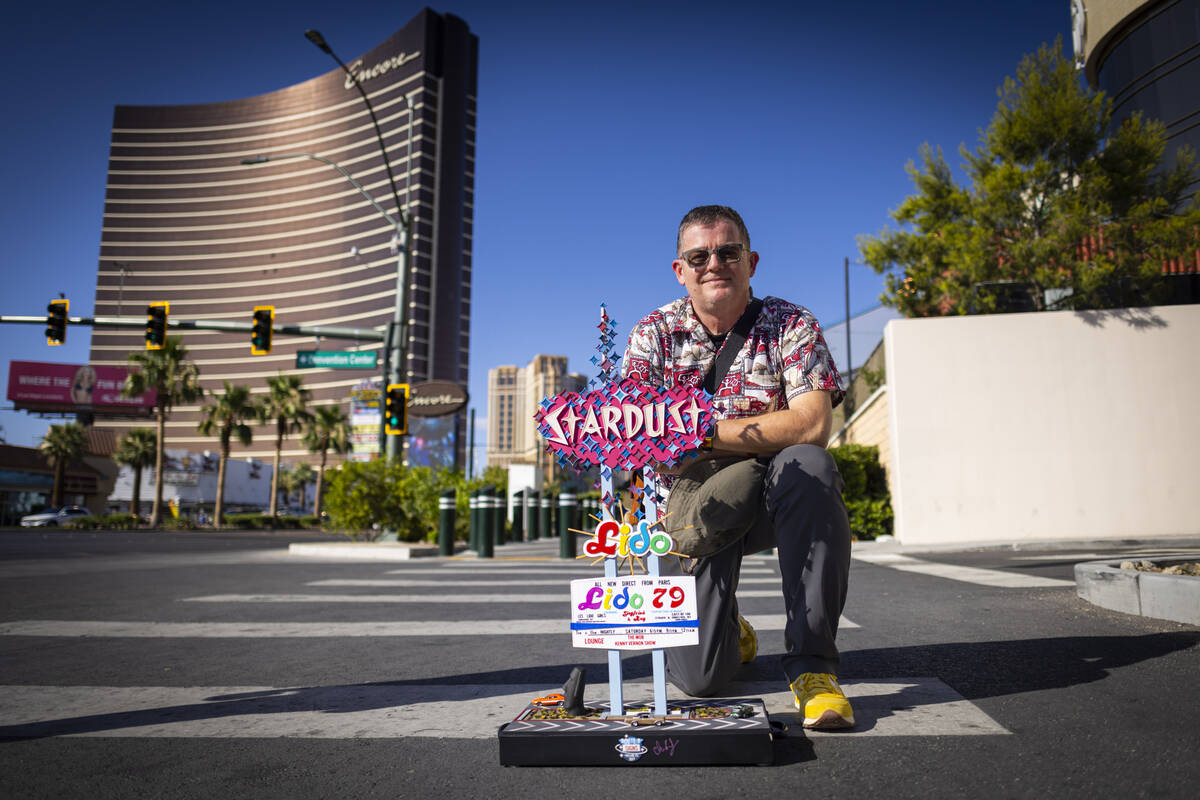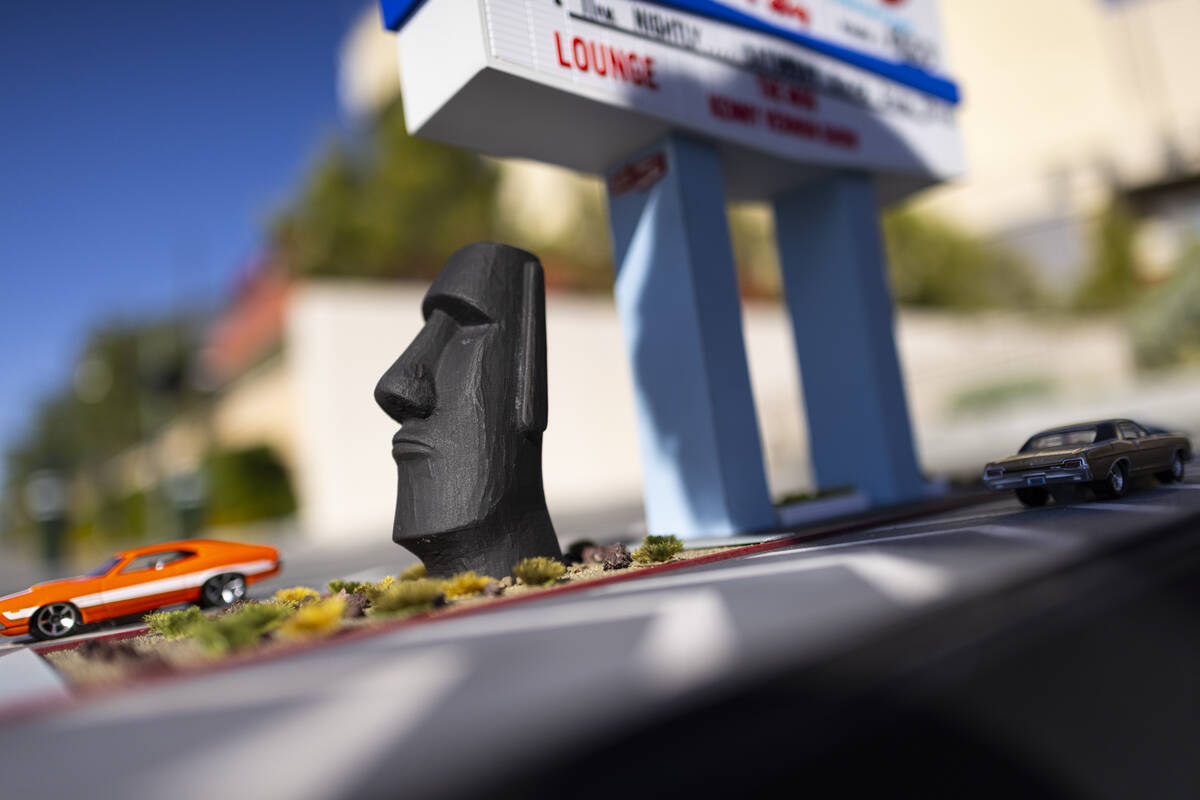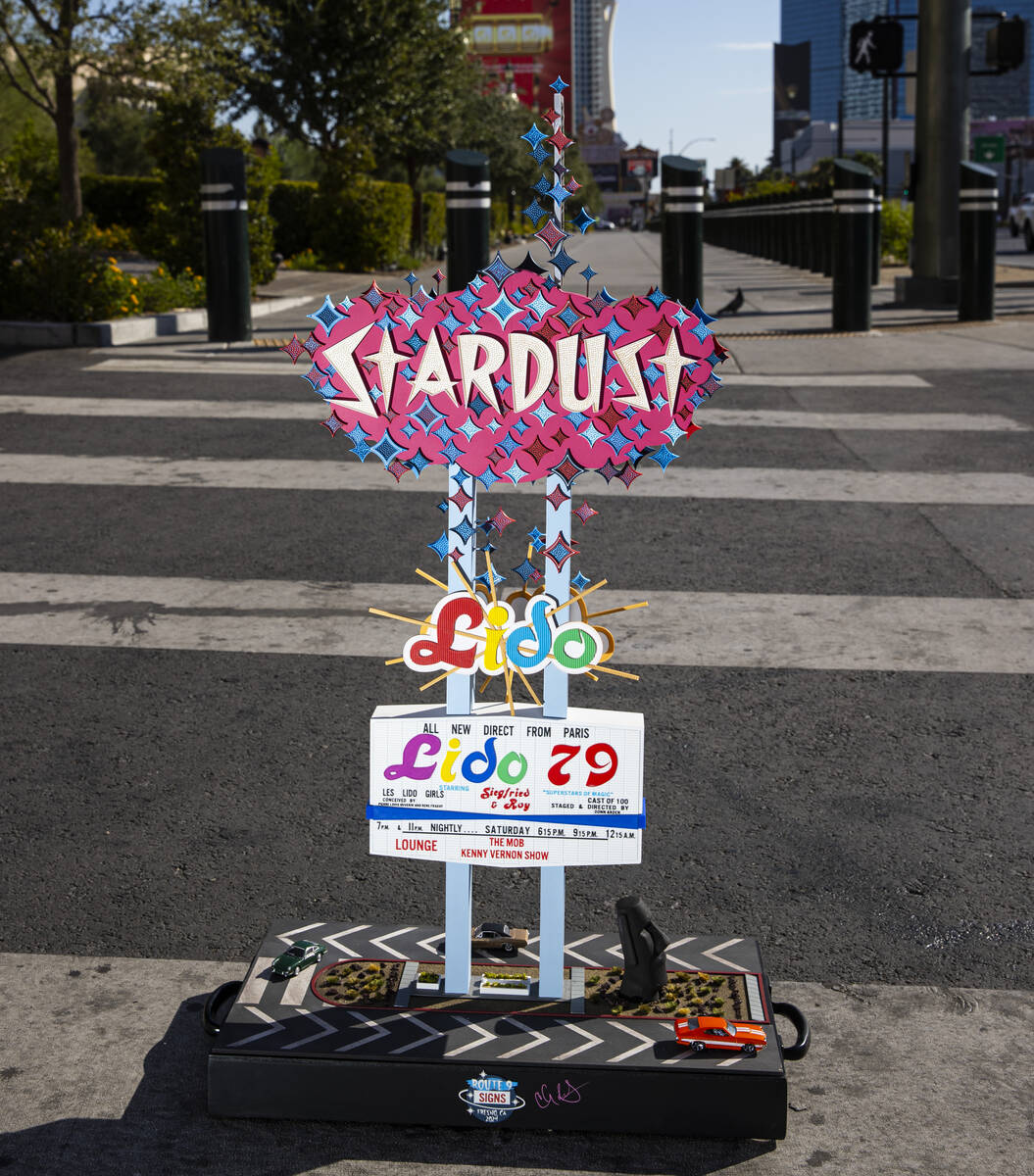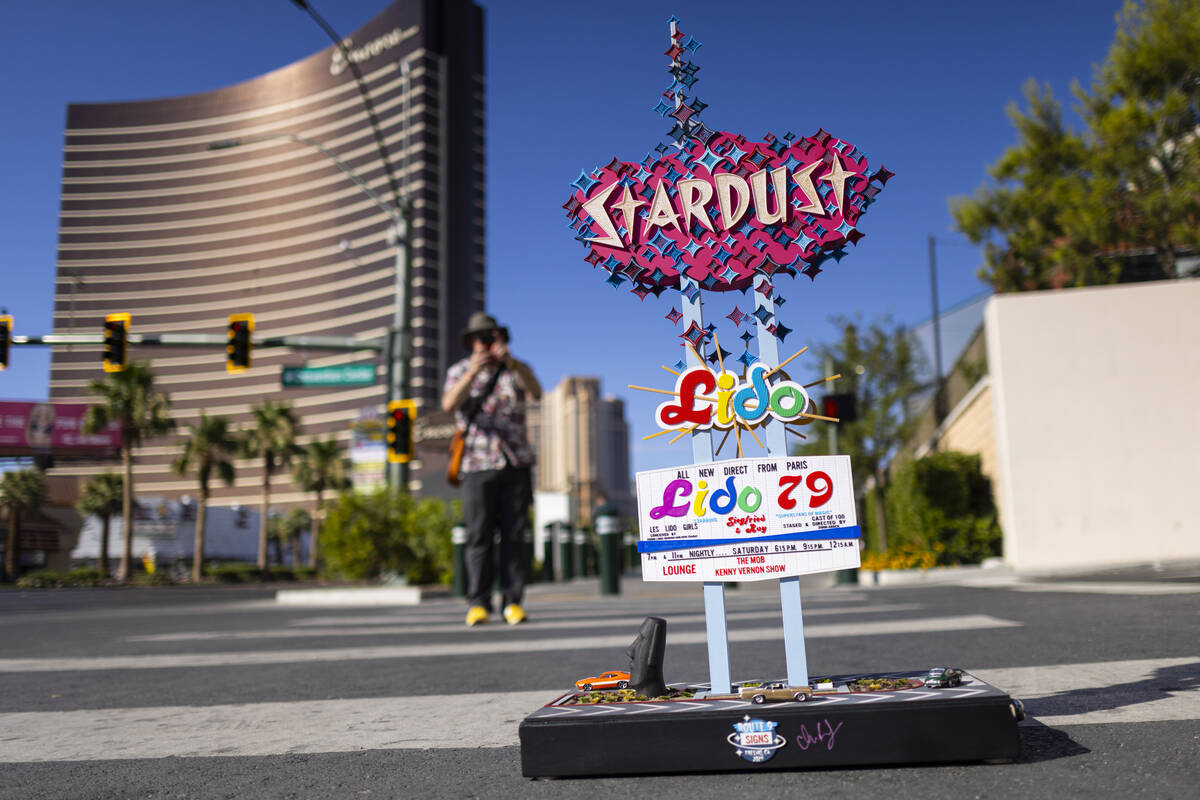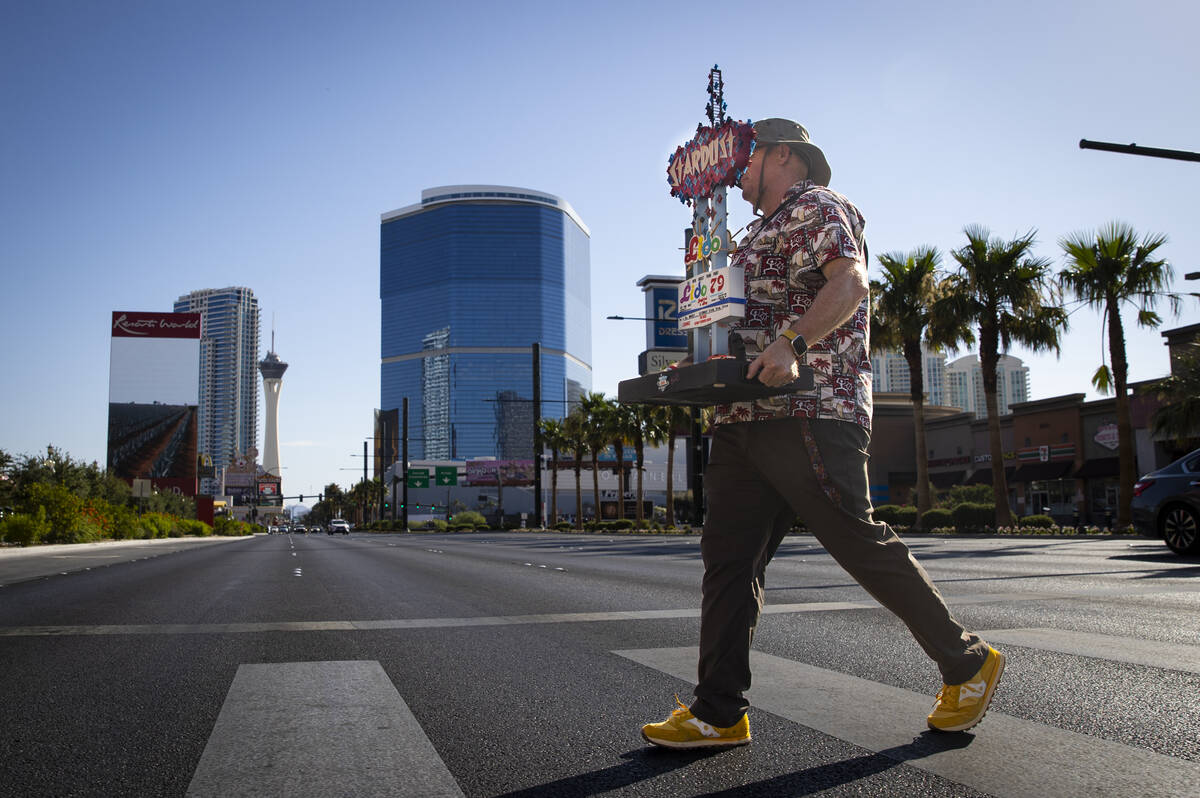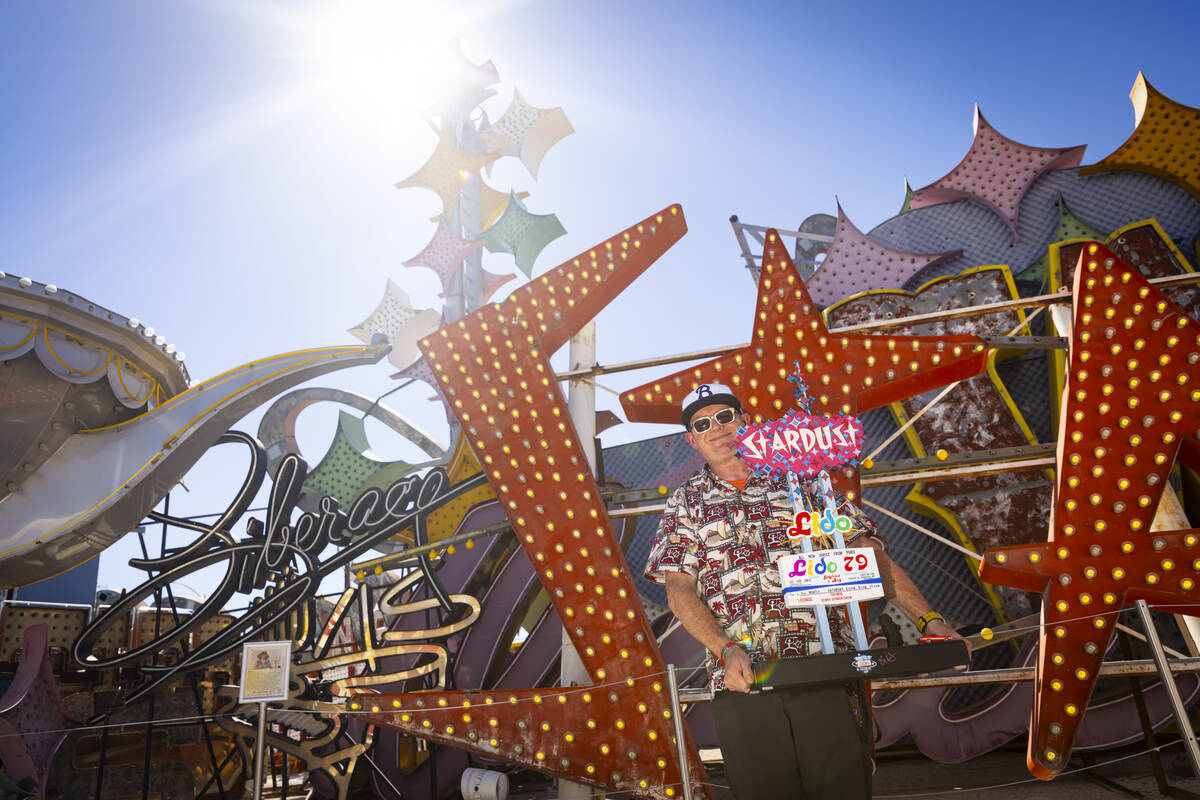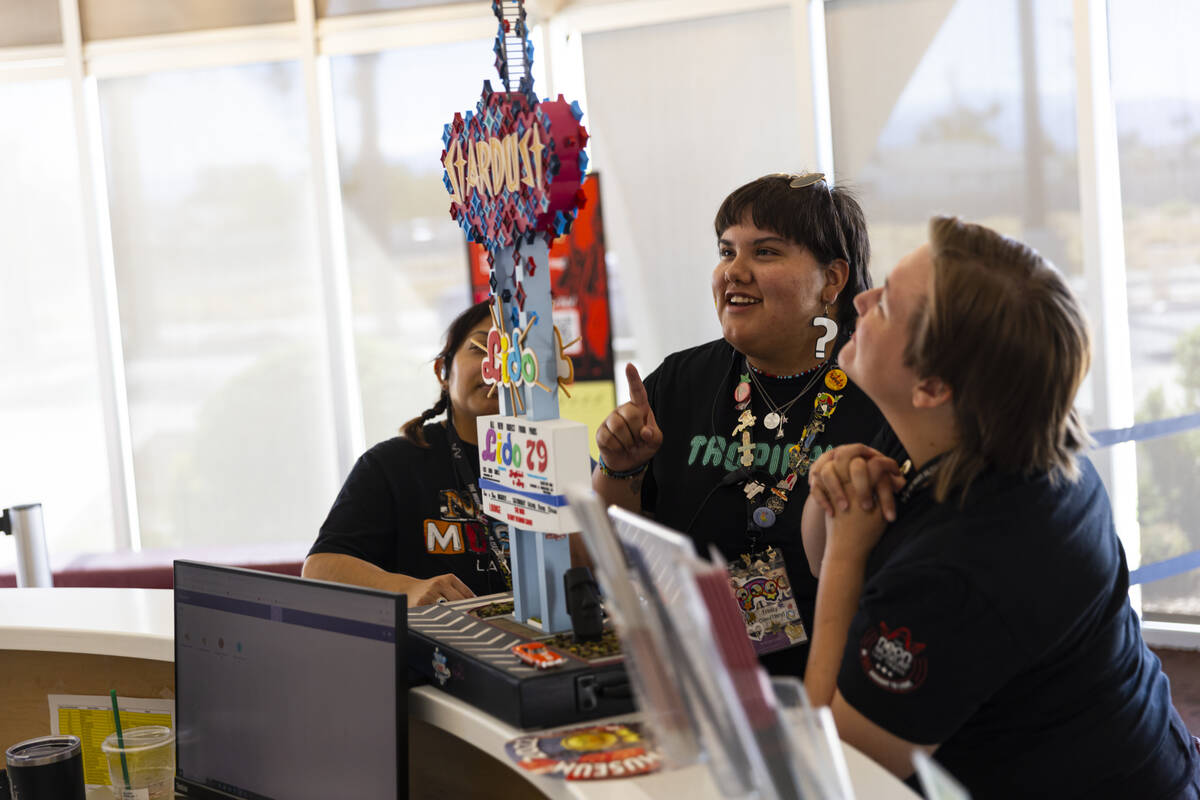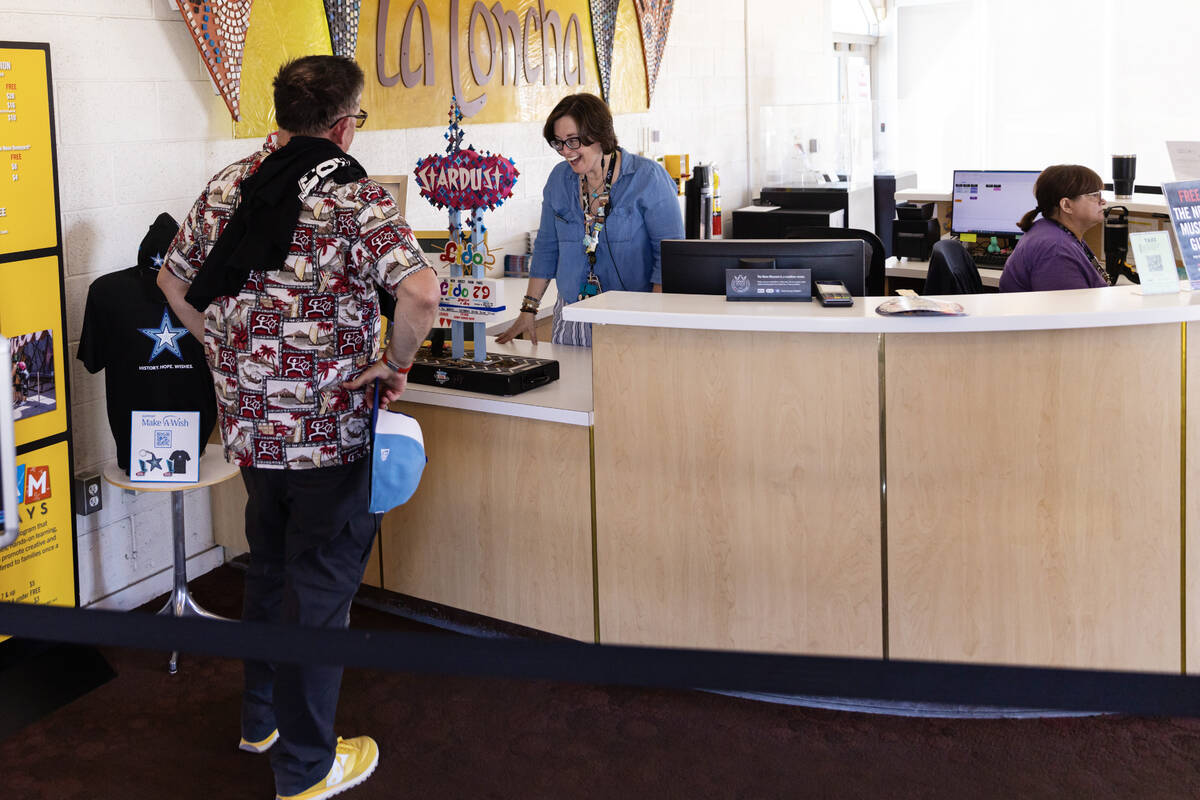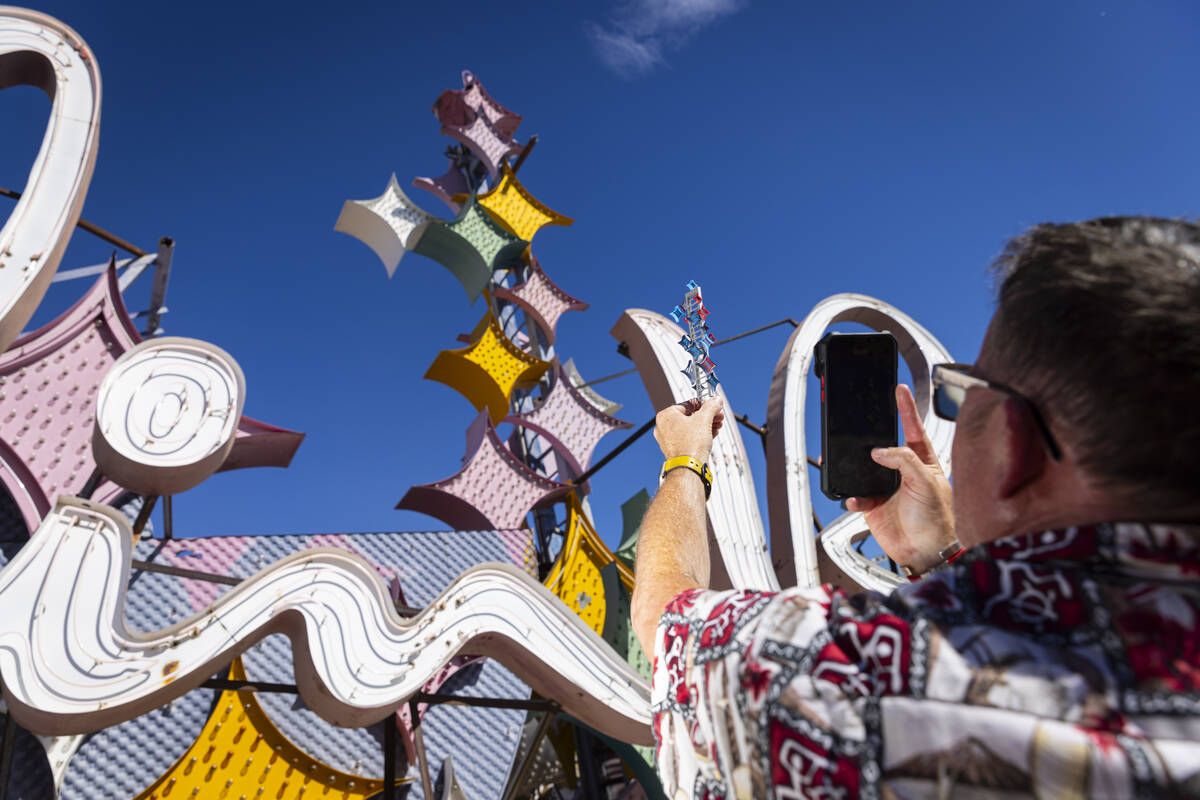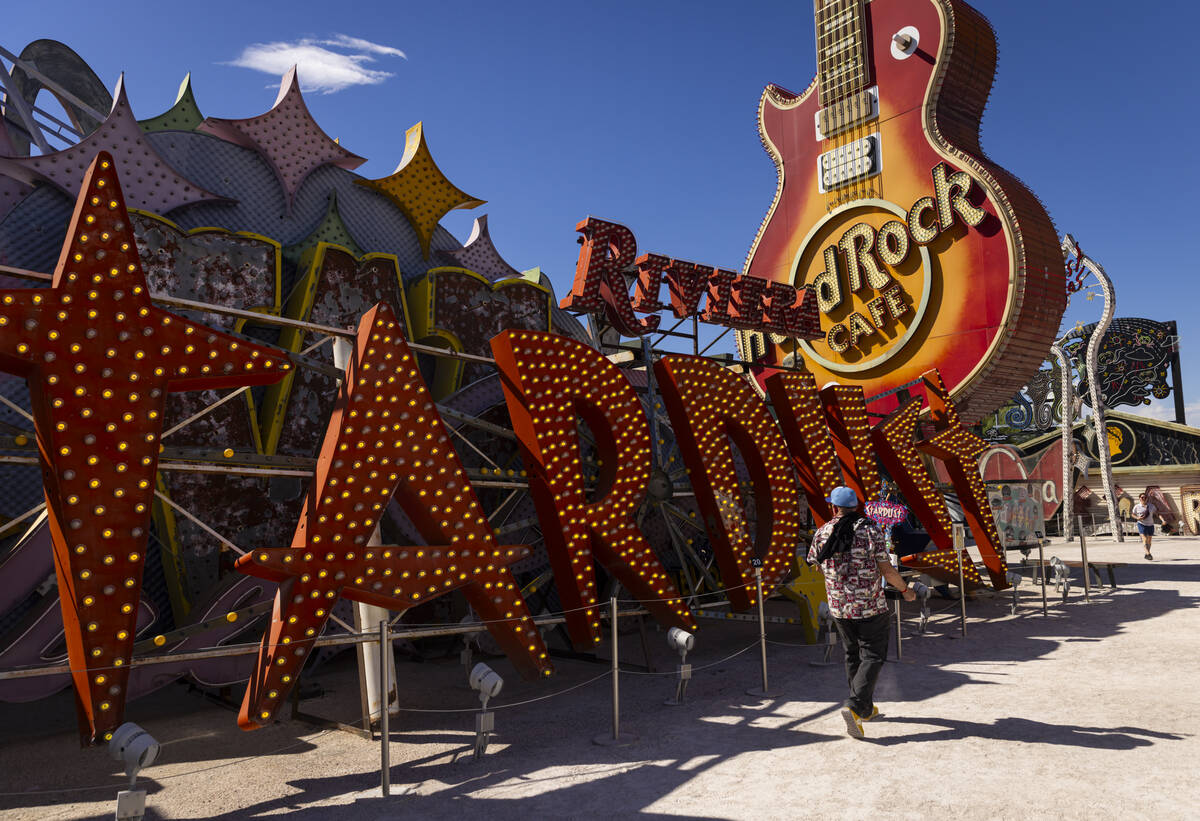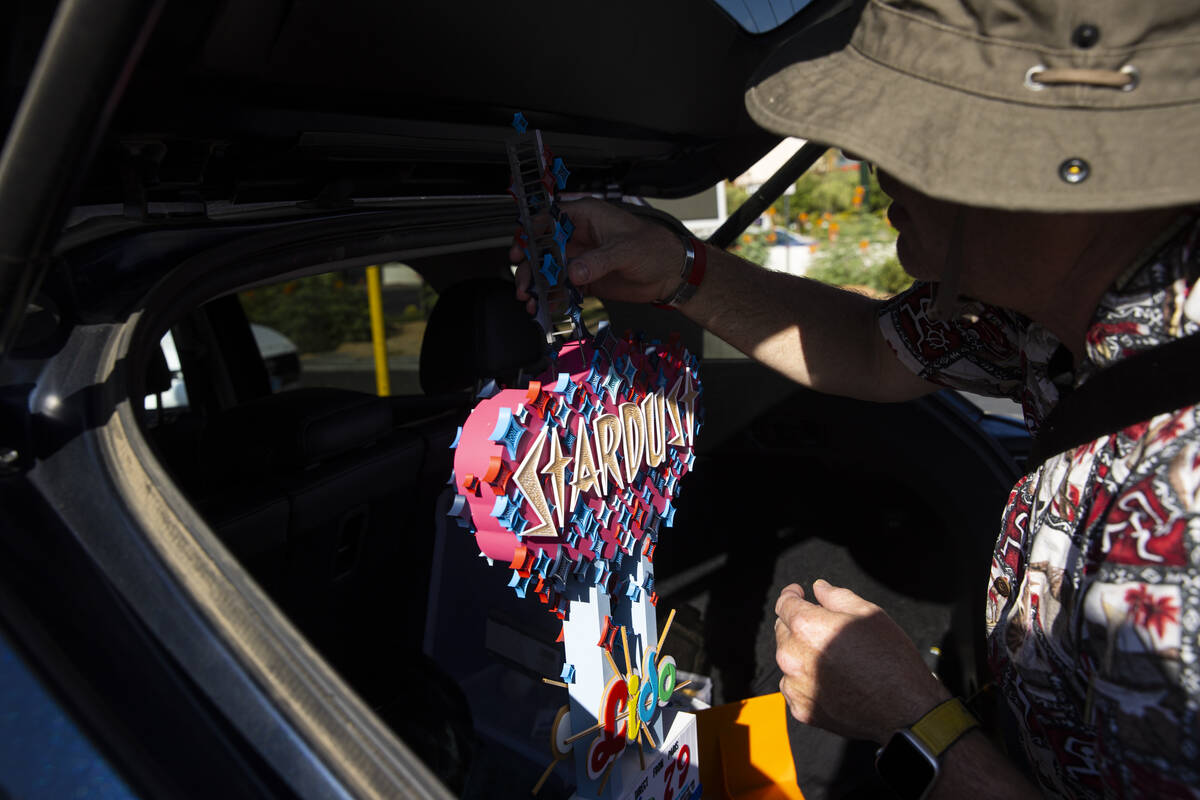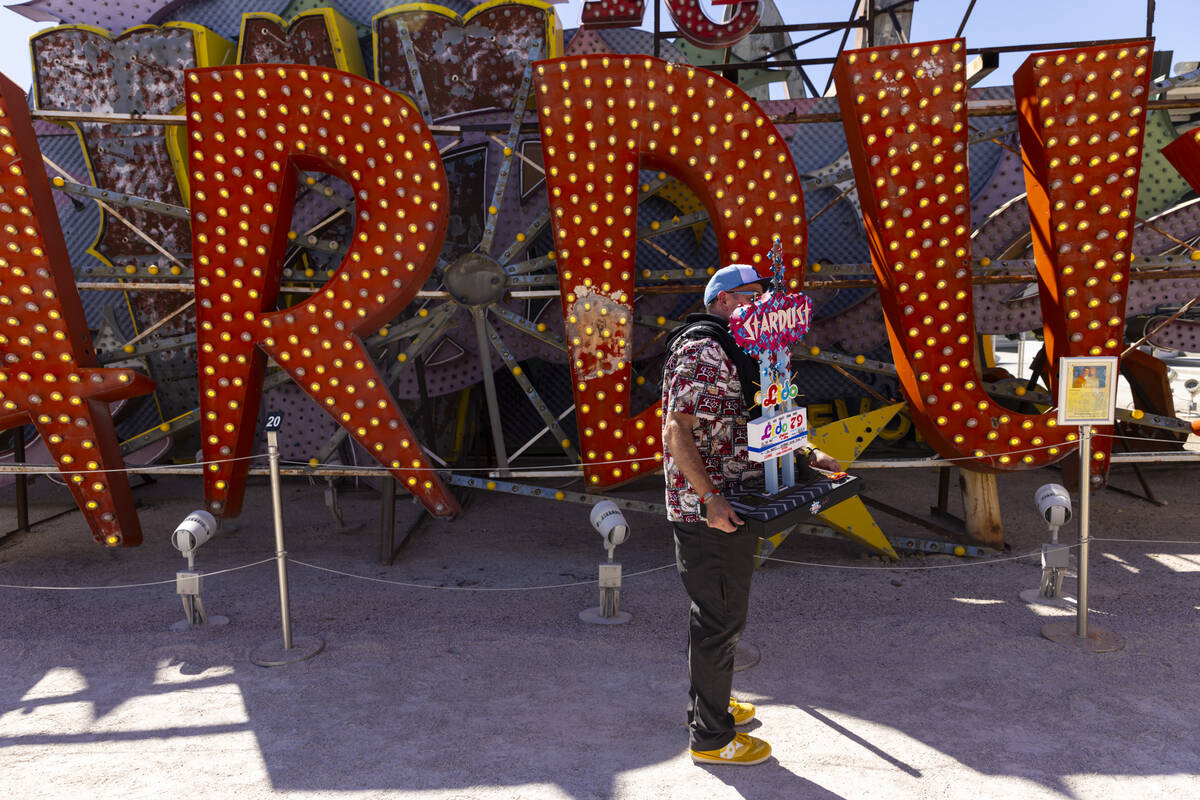A little Stardust: Mini version of classic Strip sign goes to Neon Museum
Twenty years ago, Chris Raley watched the Las Vegas lights slowly disappear in the rearview mirror of a 26-foot U-Haul. After nearly two years in the city, he returned home to California feeling like he and Vegas just weren’t meant to be.
“I felt like Vegas didn’t like me,” said Raley, who now lives in Fresno with his wife Angelica and 17-year-old son Matthew.
On Wednesday, Raley was back in Las Vegas to donate his third miniature version of a classic Strip sign to the Neon Museum. On the verge of tears, he placed a 34-inch version of the 1960s Stardust resort and casino sign — in its starry, pink glory — where it once lit the Strip decades ago.
Raley is a sign guy. Since 2017, he’s re-created hundreds of miniature versions of famous signs. Some are commissions through his company Route 9 Signs, but many are simply an outlet to relieve stress. A small number are donations.
“I’ve wanted to put the Stardust sign back in its original spot for a long time,” he said.
Personal reasons, as well as a divorce, caused Raley to leave Vegas in 2004. Little did he know that two decades later, he’d be back in Las Vegas and feeling triumphant.
“It’s part relief,” he said, reflecting on his early experiences in Vegas versus now. “It’s part middle finger to the previous life I lived.”
This was Raley’s comeback story.
Then and now
Crossing the street to Resorts World, where the Stardust once stood before its implosion in 2007, and setting the sign on the hot Strip ground, Raley felt the emotions set in, he said. There are decades of feelings, good and bad, attached to his Stardust replica.
Raley was able to switch the narrative on what the Stardust meant to his life. As a young man, the city was a symbol of hopes dashed. As a 52-year-old husband and father, it was a goal achieved.
His recreation was also a way to honor all the people who found meaning in the sign along the way. From the creators of the original Stardust sign to the tourists who were dazzled by it for years — Raley’s sign was a way to give back to the Vegas community, past and present.
“He brings the pieces back to where they were originally installed. … I think that’s a great way to show then and now, with how quick our town changes,” said Emily Fellmer, senior collections manager for the Neon Museum.
In 2021, Raley donated a re-creation of the Dunes sign and in 2023, he donated a version of the La Concha Motel sign. The original Dunes sign, along with its casino, was imploded in the 1990s. Parts of the La Concha sign were lost in the 1990s, but the rest of the sign still sits in the museum.
Raley’s pieces are part of the education collection, a collection where museumgoers can see the full sign for what it once was and also see it to scale, since many of the signs sit dismantled at the museum.
“Seeing it all put back together again in full glory is so amazing,” Fellmer said.
Finding an outlet
Raley wasn’t always into creating signs. He started out making autism awareness jewelry, but when his creativity ran out in the jewelry department, he started going on “online road trips” on Google Maps.
He discovered old signs and ran with it. There’s no limit to the inspiration, he said.
Signs are his way to cope and relieve stress as he is the primary caregiver for his 17-year-old son Matthew — who has autism and epilepsy.
“I wouldn’t be doing any of this if it wasn’t for my son,” Raley said. “Signs and art is not my purpose. My purpose for being on this planet is taking care of him.”
Raley uses a 3D printer to create his signs, which allows him to provide Matthew care when he needs it. Raley, a former aircraft mechanic in the U.S. Air Force, enjoys the problem solving aspect of his creation — solving equations, formulating the dimensions and creating the shapes and letters in a 3D design software. His printer does the rest of the work.
After the printing process is complete, because of size limitations, he puts the pieces together, curating a final product. His emotions follow, usually relief and disbelief. His Stardust sign is more than an art piece and it brought on bigger sentiments than what’s typical for him, he said.
“Crossing the finish line, this has been my goal,” he said about placing Stardust in its original spot. “There’s a very emotional side of this for me.”
‘Heyday of the giant signs’
David Schwartz, a gaming historian in Las Vegas, said the signs of old Las Vegas made up for a lack of interesting architecture. Casinos in the 20th century were not as flashy or as big as modern-day casinos.
“That really was part of the 1960s heyday of the giant signs,” Schwartz said. “These really were supposed to convey the personality of the resort — what it was all about.”
The Stardust represented modernity and adventure, he said.
With his family life, Raley is now feeling fulfilled and supported, he said. He hopes to return to Las Vegas next summer with a re-creation of Vegas Vic, the well-known neon cowboy sign that stands above Fremont Street, which first piqued Raley’s interest.
He said he’ll make signs for the Neon Museum, his favorite museum in the world, for as long as it will have him. He feels miniature signs gave him a second chance with the city.
“How in the world did this happen?” he asked. “I kind of feel like Las Vegas likes me.”
Contact Ella Thompson at ethompson@reviewjournal.com. Follow @elladeethompson on X.



